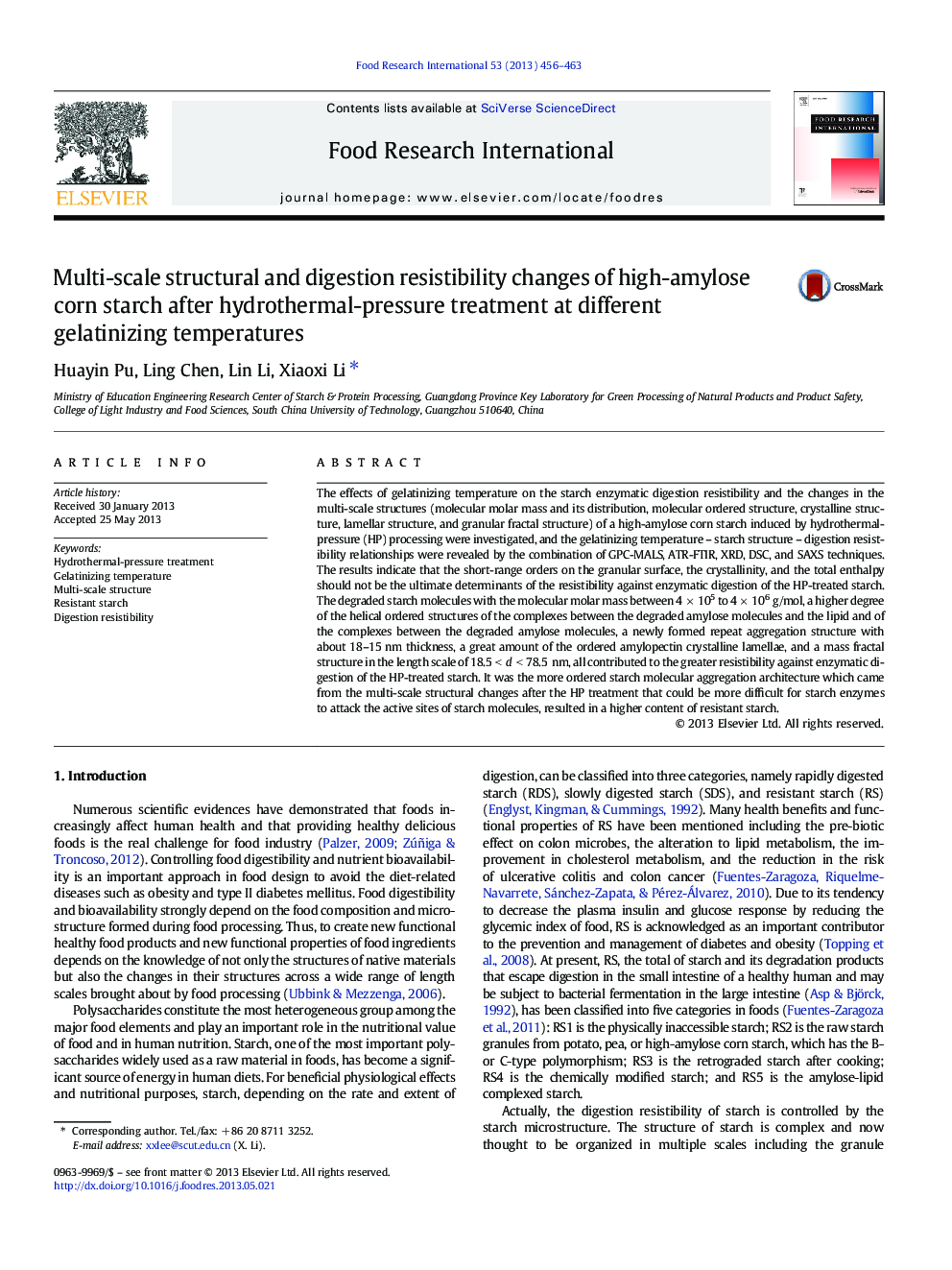| Article ID | Journal | Published Year | Pages | File Type |
|---|---|---|---|---|
| 6397797 | Food Research International | 2013 | 8 Pages |
â¢The HP treatment temperature influenced the starch digestion resistibility.â¢The starch molecules with M of 4 Ã 105-4 Ã 106 g/mol contributed to a higher RS content.â¢The ordered helical complexes of higher thermostability led to the RS formation.â¢The higher crystallinity and enthalpy of the B + V type crystal resulted in less RS.â¢More ordered new repeat structure and mass fractal structure led to more RS.
The effects of gelatinizing temperature on the starch enzymatic digestion resistibility and the changes in the multi-scale structures (molecular molar mass and its distribution, molecular ordered structure, crystalline structure, lamellar structure, and granular fractal structure) of a high-amylose corn starch induced by hydrothermal-pressure (HP) processing were investigated, and the gelatinizing temperature - starch structure - digestion resistibility relationships were revealed by the combination of GPC-MALS, ATR-FTIR, XRD, DSC, and SAXS techniques. The results indicate that the short-range orders on the granular surface, the crystallinity, and the total enthalpy should not be the ultimate determinants of the resistibility against enzymatic digestion of the HP-treated starch. The degraded starch molecules with the molecular molar mass between 4 Ã 105 to 4 Ã 106 g/mol, a higher degree of the helical ordered structures of the complexes between the degraded amylose molecules and the lipid and of the complexes between the degraded amylose molecules, a newly formed repeat aggregation structure with about 18-15 nm thickness, a great amount of the ordered amylopectin crystalline lamellae, and a mass fractal structure in the length scale of 18.5 < d < 78.5 nm, all contributed to the greater resistibility against enzymatic digestion of the HP-treated starch. It was the more ordered starch molecular aggregation architecture which came from the multi-scale structural changes after the HP treatment that could be more difficult for starch enzymes to attack the active sites of starch molecules, resulted in a higher content of resistant starch.
